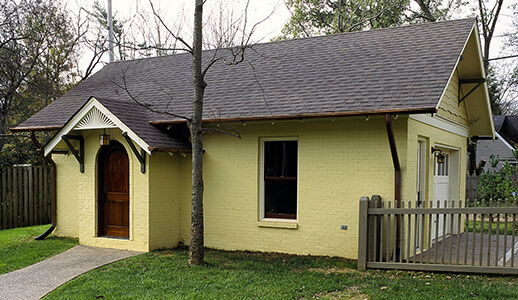
A Homeowner’s jobsite expectations for your contractors, Sub-Contractors, and Handymen
(Note: I will be using the word “contractor” for all categories of builders, contractors, handymen, remodelers, subcontractors, and tradespeople.)
The word “jobsite” doesn’t just mean your house. It’s your house, your land, and your personal property, up to and including that garden gnome in your front yard. Do you have expectations of how the contractors will act or behave on your jobsite during a home renovation?
Maybe you haven’t thought about what your expectations are. Maybe you assume they will respect your property the same way they would respect their own. Maybe you have no idea what to expect, but have heard horror stories about things that have happened during a remodel.
Many of us have strong opinions that things should be done in a certain way. (And I’ll include myself in that!) We expect it done the way we want it done, even if we do not verbalize the expectations to the contractor. People can very easily become frustrated, angry, and hurt when their expectations and reality don’t match up. Obviously, this isn’t a good place to be with your contractor. But contractors, like spouses, cannot read your mind, and inevitably the person in question does it the opposite way you were expecting. I mean, how many times have you heard, “I can’t believe they did that!” from friends and neighbors with contractor horror stories?
When it comes to home renovation, there will always be bumps in the road. The world of renovation isn’t a perfect one; we strive for perfection, and we get pretty close. But again, it’s not a perfect world. It’s important to have realistic expectations because it prepares you emotionally for the little problems that will, unfortunately, always rear their ugly heads. However, one important factor in managing your expectations is knowledge, so pat yourself on the back for reading this article and downloading the Jobsite Expectation Worksheet!
As a Residential Designer, I have expectations of the contractor as well. I produce construction drawings to graphically show what I expect from the contractors in your addition/renovation project, but we also talk about my expectations of them. I feel totally comfortable explaining my expectations of them and what they do for my clients, but I do this kind of thing all the time. You’re probably only going to be putting an addition on your house once, so it’s understandable to be a little nervous, but it’s much better to bite the bullet and talk about these things on the front end. You can do it, I promise!
Over the years, I have gathered more than a few stories (not all of them bad) about the subtle nature of jobsite expectations. I’ll relate a few of them here to give you an idea of what I mean.
Ready to receive your FREE copy of the 3 page interactive
“Jobsite Expectation Worksheet” today?
Get instant access to the
Jobsite Expectations Worksheet
My first story is about a contractor named Bill. He is a great contractor and he has a lot of repeat business. I dropped by one of his jobsites one day, and it was easy to see why his homeowners love him so much.
The first thing I noticed was that he had established a dedicated construction entrance. The home was located on the corner of a busy intersection, and was not on a very big lot. Having a dedicated construction entrance not only gave tradespeople a place to park, but it also served as a location for materials to be unloaded. This was a brilliant way to establish the rules for tradespeople and materials.
The second thing I noticed was that he had roped off areas where the vehicles were not to be driven, as well as roping off areas to protect trees and landscaping. (I’ve had a few clients that have had these special trees or landscaping items really close to the house that they did not want damaged. As an alternative to roping these areas off, I will locate the trees or landscaping items on the plans and place a note on the drawings “not to damage this tree or disturb it in any way”. Either way works to set the expectation to treat the landscaping with care.)
The third thing I noticed was that he hung a “No Smoking” sign right by the side door where all the tradespeople entered the house. There was also a designated smoking area outside with an ash tray.
Clearly, he was telling all the tradespeople about several of his and the homeowners’ expectations right up front: not in the middle of the project. This is a great example of setting expectations, and it really showed his care and attention for his clients. No wonder they love him!
I’m not saying that if you have a contractor that’s not done any of that, that they are a bad contractor. It just means that maybe they didn’t think about it, which is why you should. Remember that your relationship with your contractor is a partnership.
The second story is about one of my past clients. Their addition and renovation project was being overseen by a contractor I knew very well, so I could vouch for his quality of work and professionalism. But I had never heard any complaints from any of my clients quite like the ones below.
Many of the subcontractors were smokers, and from the very beginning of the project, had been taking smoke breaks on the property (not in the house, of course). It wasn’t until a few months into the project that the homeowners decided that they did not want any smoking on their property. The contractor related this to his subcontractors, and they moved their smoking to the alley behind the house, which is off the property entirely. This should have been a workable solution. But the homeowners did not want any smoking in the alley either, and complained until the subcontractors were forced to retreat to their cars in order to take their breaks.
From the contractor’s point of view, it was unfair to be told in the middle of the job about this limitation. In his words: ”You can’t tell people not to smoke for 6 to 8 hours when they have already been smoking on the property for a few months.” He also said that he would have hired non-smoking tradespeople if he had known about this upfront.
This same homeowner was very interested in having their project be as environmentally friendly as possible. The project was already in the framing stage when the homeowner asked that all tradespeople not bring plastic water or soda bottles to the jobsite. The homeowners declared that they would provide a 5 gallon jug of ice water and cups every day for all tradespeople to use instead. This was an environmental issue for the homeowner because plastic bottles are just really horrible for the environment, and they were very adamant that no plastic bottles be on the jobsite. (The homeowner was really into sustainable and green building!)
This was the second major change for the all the tradespeople in the middle of the project. I’m not saying that the homeowners shouldn’t have those kinds of expectations of the workers. They absolutely can. However, these are the kinds of expectations that need to be established upfront because they can cause a lot of hard feelings with the subcontractors, the tradespeople and even the general contractor.
It’s very hard to suddenly change the rules in the middle of a project once it begins. You can change the rules, and sometimes it can’t be avoided, but there will be frustration with the workers. For this reason, it is very important that you discuss upfront with the contractor what issues are important to you.
The homeowner should have expressed their concerns, desires and expectations during the bidding process. If you want all of the subcontractors to act a certain way (like all be dressed perfectly, no smoking, no cursing, no plastic bottles, where to park, etc.) you should establish this up front. Even if your project is small—like you are just hiring a roofer, painter or plumber for your house—you still need to go over some of these expectation issues. It’s all about figuring what’s going to make YOU comfortable and happy with these people being in your house.
The goal of this article is to get you, as a homeowner, to start thinking about all the different issues in regards to the actions and behaviours of the contractors on your property. You will have a much better renovation experience if you think about these things ahead of time.
To that end, I have created the “Job Expectation Worksheet,” which is designed to help you think about your expectations and write them down. Going through this form should get you in the right mindset to think about which jobsite expectations are most important to you.
So please, have these kinds of discussions with the contractors upfront and let your expectations be known. Most of them will appreciate that and be grateful that you are having the discussion before something happens and hard feelings are formed. If the contractors are not accommodating, then that’s a red flag to not hire them.
Ready to receive your FREE copy of the 3 page interactive
“Jobsite Expectation Worksheet” today?
Get instant access to the
Jobsite Expectations Worksheet

And remember it’s your home and your money, so make the most of it!
Lynn Taylor, Residential Designer
![]()
























